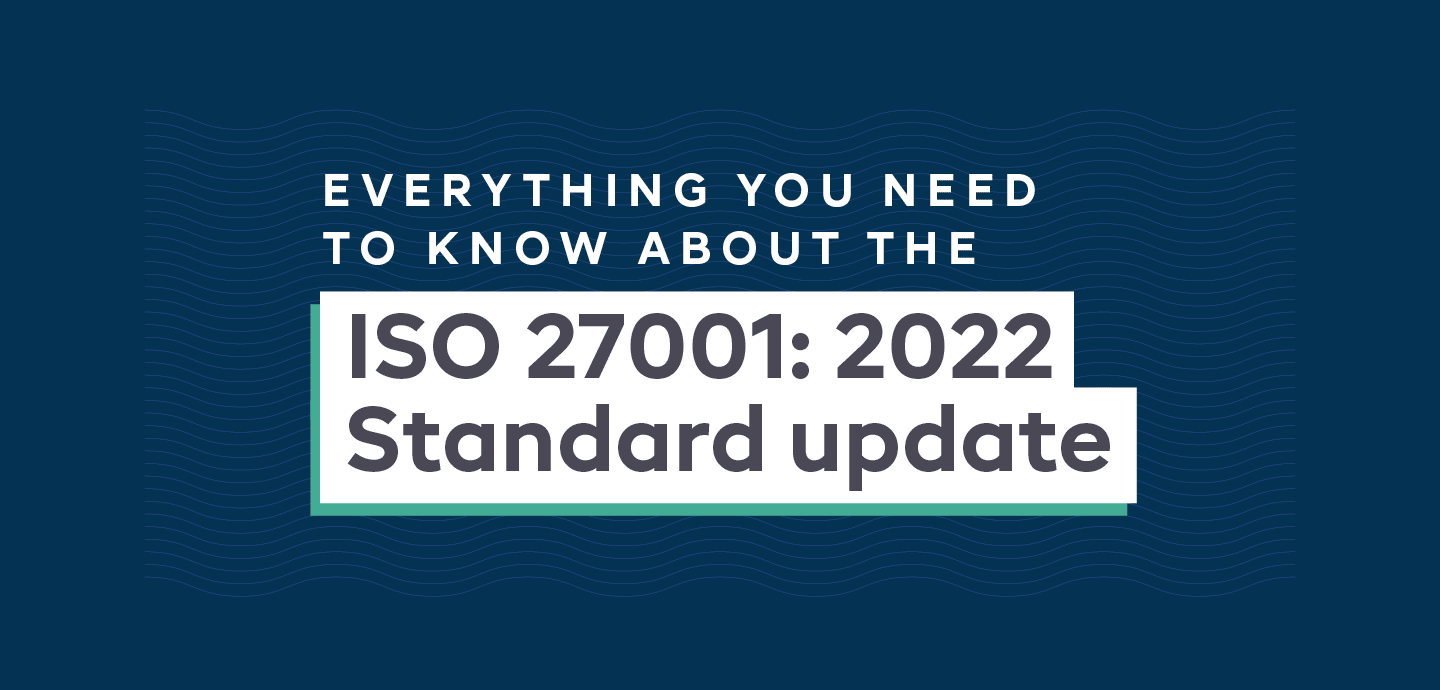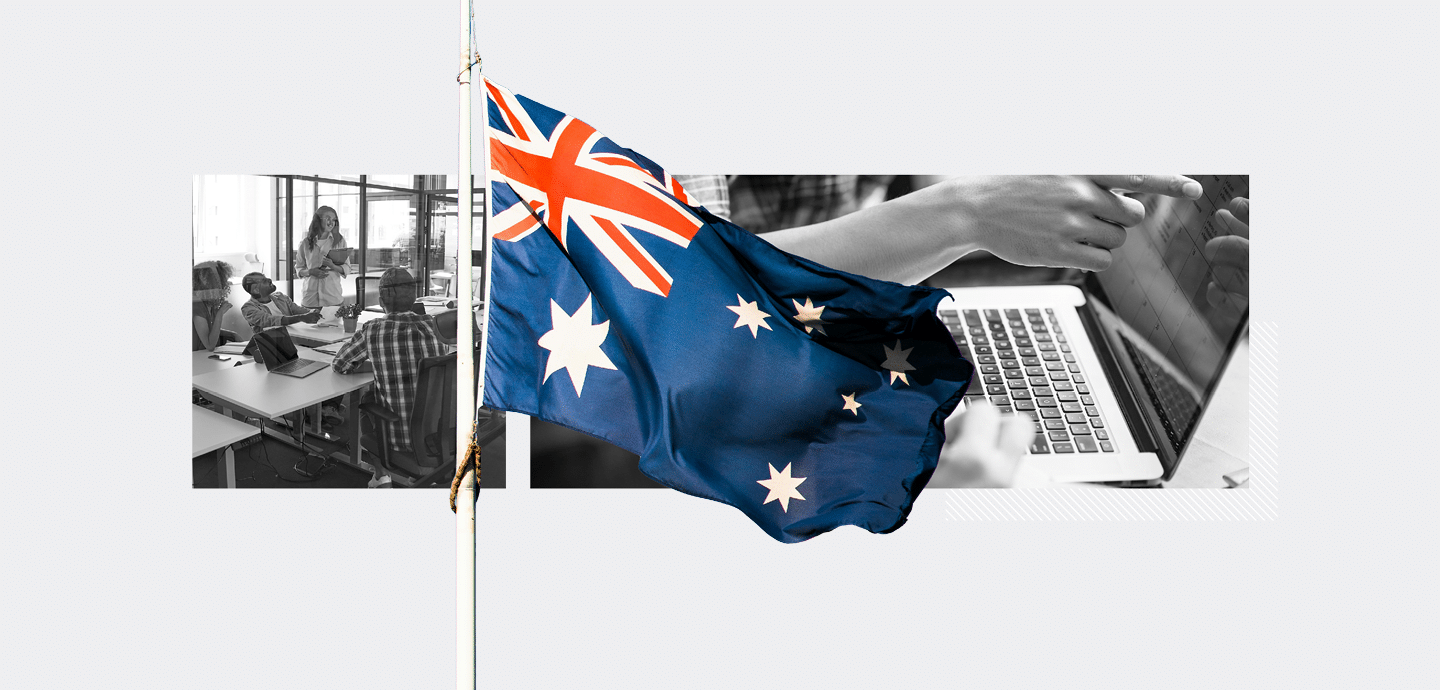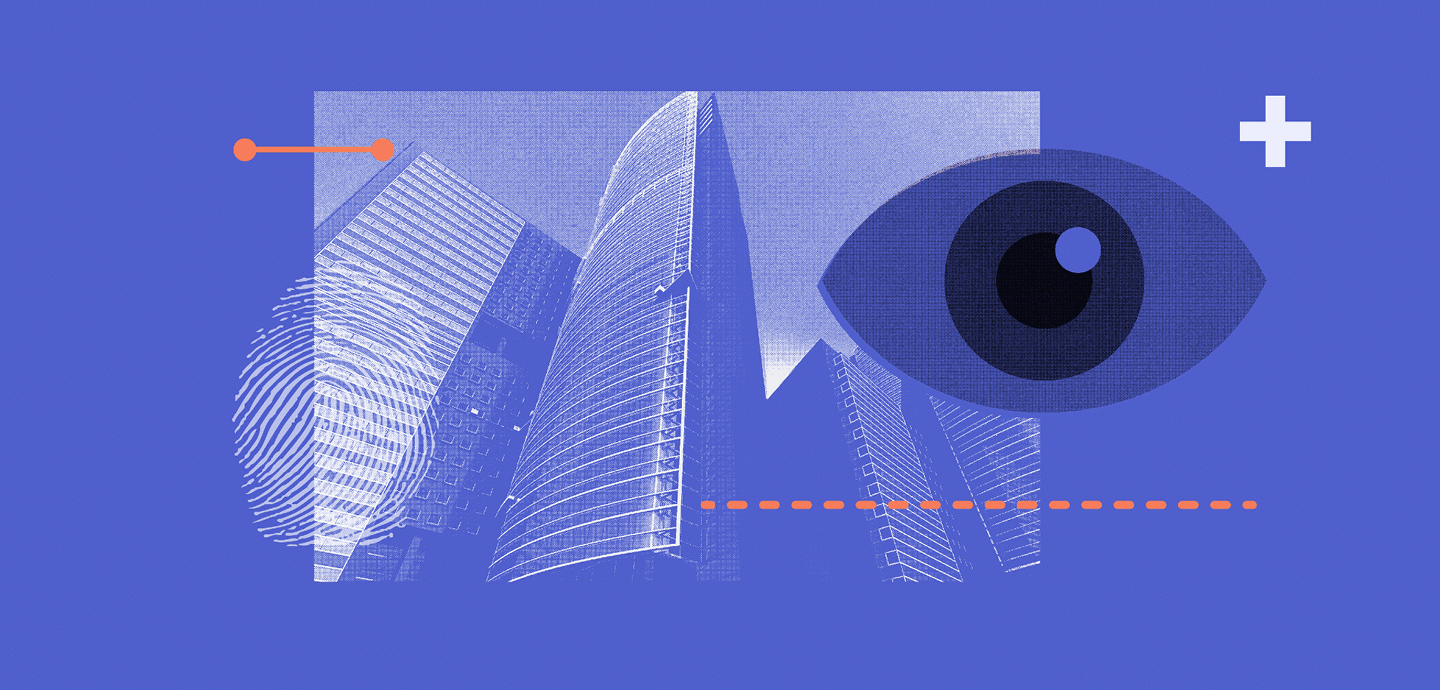
Everything You Need to Know About the ISO 27001: 2022 Standard Update
Table Of Contents:
A new and improved version of ISO/IEC 27001 was published last week to address growing global cybersecurity challenges and improve digital trust. The world’s best-known standard on information security management helps organisations secure their information assets – which is vital in today’s increasingly digital world.
If you’re responsible for information security, the new ISO/IEC 27001: 2022 standard update requires you to implement the changes to ensure you remain compliant and align your infosec posture with the digitisation of business practices and accompanying threats.
What Has Changed In The ISO/IEC 27001: 2022 Standard
The good news is that many changes are editorial, for example, changing ‘international standard’ to ‘document’ throughout and rearranging phrases to allow for better international translation.
There are also changes to align with the ISO harmonised approach:
- Numbering re-structure
- The requirement to define processes needed for implementing the ISMS and their interactions
- The explicit requirement to communicate organisational roles relevant to information security within the organisation
- New clause 6.3 – Planning of Changes
- A new requirement to ensure the organisation determines how to communicate as part of clause 7.4
- New requirements to establish criteria for operational processes and implement control of the processes
The core changes, however, apply to updates to the current controls in Annex A to align the standard better with the recent changes to ISO/IEC 27002 – Information security, cybersecurity and privacy protection.
The changes to ISO/IEC 27001: 2022 also consider that risk management increasingly spreads across more organisational functions. Therefore the updates are intended to make it more straightforward for more people to map and implement the proper security controls.
What Are The Core Changes to Annex A Controls in ISO/IEC 27001: 2022
The number of controls has reduced from 114 to 93
Some controls have been deleted, 24 controls have been merged, and 58 have been revised. 11 new security controls have been added, designed to address the evolving information security and cybersecurity landscape; these are:
A.5.7 Threat intelligence
A.5.23 Information security for use of cloud services
A.5.30 ICT readiness for business continuity
A.7.4 Physical security monitoring
A.8.9 Configuration management
A.8.10 Information deletion
A.8.11 Data masking
A.8.12 Data leakage prevention
A.8.16 Monitoring activities
A.8.23 Web filtering
A.8.28 Secure coding
As a result, you need to update your management system to optimise any existing ISMS and better align with the context of your information security risks and your organisation.
The structure has been consolidated into four key areas
- Organisational
- People
- Physical
- Technological
This contrasts with the 14 areas that formed the previous version of the standard.
Table of All ISO 27001:2022 Annex A Controls
In the table below you’ll find more information on each individual ISO 27001:2022 Annex A Control.
ISO 27001:2022 Organisational Controls
| Annex A Control Type | ISO/IEC 27001:2022 Annex A Identifier | ISO/IEC 27001:2013 Annex A Identifier | Annex A Name |
|---|---|---|---|
| Organisational Controls | Annex A 5.1 | Annex A 5.1.1 Annex A 5.1.2 | Policies for Information Security |
| Organisational Controls | Annex A 5.2 | Annex A 6.1.1 | Information Security Roles and Responsibilities |
| Organisational Controls | Annex A 5.3 | Annex A 6.1.2 | Segregation of Duties |
| Organisational Controls | Annex A 5.4 | Annex A 7.2.1 | Management Responsibilities |
| Organisational Controls | Annex A 5.5 | Annex A 6.1.3 | Contact With Authorities |
| Organisational Controls | Annex A 5.6 | Annex A 6.1.4 | Contact With Special Interest Groups |
| Organisational Controls | Annex A 5.7 | NEW | Threat Intelligence |
| Organisational Controls | Annex A 5.8 | Annex A 6.1.5 Annex A 14.1.1 | Information Security in Project Management |
| Organisational Controls | Annex A 5.9 | Annex A 8.1.1 Annex A 8.1.2 | Inventory of Information and Other Associated Assets |
| Organisational Controls | Annex A 5.10 | Annex A 8.1.3 Annex A 8.2.3 | Acceptable Use of Information and Other Associated Assets |
| Organisational Controls | Annex A 5.11 | Annex A 8.1.4 | Return of Assets |
| Organisational Controls | Annex A 5.12 | Annex A 8.2.1 | Classification of Information |
| Organisational Controls | Annex A 5.13 | Annex A 8.2.2 | Labelling of Information |
| Organisational Controls | Annex A 5.14 | Annex A 13.2.1 Annex A 13.2.2 Annex A 13.2.3 | Information Transfer |
| Organisational Controls | Annex A 5.15 | Annex A 9.1.1 Annex A 9.1.2 | Access Control |
| Organisational Controls | Annex A 5.16 | Annex A 9.2.1 | Identity Management |
| Organisational Controls | Annex A 5.17 | Annex A 9.2.4 Annex A 9.3.1 Annex A 9.4.3 | Authentication Information |
| Organisational Controls | Annex A 5.18 | Annex A 9.2.2 Annex A 9.2.5 Annex A 9.2.6 | Access Rights |
| Organisational Controls | Annex A 5.19 | Annex A 15.1.1 | Information Security in Supplier Relationships |
| Organisational Controls | Annex A 5.20 | Annex A 15.1.2 | Addressing Information Security Within Supplier Agreements |
| Organisational Controls | Annex A 5.21 | Annex A 15.1.3 | Managing Information Security in the ICT Supply Chain |
| Organisational Controls | Annex A 5.22 | Annex A 15.2.1 Annex A 15.2.2 | Monitoring, Review and Change Management of Supplier Services |
| Organisational Controls | Annex A 5.23 | NEW | Information Security for Use of Cloud Services |
| Organisational Controls | Annex A 5.24 | Annex A 16.1.1 | Information Security Incident Management Planning and Preparation |
| Organisational Controls | Annex A 5.25 | Annex A 16.1.4 | Assessment and Decision on Information Security Events |
| Organisational Controls | Annex A 5.26 | Annex A 16.1.5 | Response to Information Security Incidents |
| Organisational Controls | Annex A 5.27 | Annex A 16.1.6 | Learning From Information Security Incidents |
| Organisational Controls | Annex A 5.28 | Annex A 16.1.7 | Collection of Evidence |
| Organisational Controls | Annex A 5.29 | Annex A 17.1.1 Annex A 17.1.2 Annex A 17.1.3 | Information Security During Disruption |
| Organisational Controls | Annex A 5.30 | NEW | ICT Readiness for Business Continuity |
| Organisational Controls | Annex A 5.31 | Annex A 18.1.1 Annex A 18.1.5 | Legal, Statutory, Regulatory and Contractual Requirements |
| Organisational Controls | Annex A 5.32 | Annex A 18.1.2 | Intellectual Property Rights |
| Organisational Controls | Annex A 5.33 | Annex A 18.1.3 | Protection of Records |
| Organisational Controls | Annex A 5.34 | Annex A 18.1.4 | Privacy and Protection of PII |
| Organisational Controls | Annex A 5.35 | Annex A 18.2.1 | Independent Review of Information Security |
| Organisational Controls | Annex A 5.36 | Annex A 18.2.2 Annex A 18.2.3 | Compliance With Policies, Rules and Standards for Information Security |
| Organisational Controls | Annex A 5.37 | Annex A 12.1.1 | Documented Operating Procedures |
ISO 27001:2022 People Controls
| Annex A Control Type | ISO/IEC 27001:2022 Annex A Identifier | ISO/IEC 27001:2013 Annex A Identifier | Annex A Name |
|---|---|---|---|
| People Controls | Annex A 6.1 | Annex A 7.1.1 | Screening |
| People Controls | Annex A 6.2 | Annex A 7.1.2 | Terms and Conditions of Employment |
| People Controls | Annex A 6.3 | Annex A 7.2.2 | Information Security Awareness, Education and Training |
| People Controls | Annex A 6.4 | Annex A 7.2.3 | Disciplinary Process |
| People Controls | Annex A 6.5 | Annex A 7.3.1 | Responsibilities After Termination or Change of Employment |
| People Controls | Annex A 6.6 | Annex A 13.2.4 | Confidentiality or Non-Disclosure Agreements |
| People Controls | Annex A 6.7 | Annex A 6.2.2 | Remote Working |
| People Controls | Annex A 6.8 | Annex A 16.1.2 Annex A 16.1.3 | Information Security Event Reporting |
ISO 27001:2022 Physical Controls
| Annex A Control Type | ISO/IEC 27001:2022 Annex A Identifier | ISO/IEC 27001:2013 Annex A Identifier | Annex A Name |
|---|---|---|---|
| Physical Controls | Annex A 7.1 | Annex A 11.1.1 | Physical Security Perimeters |
| Physical Controls | Annex A 7.2 | Annex A 11.1.2 Annex A 11.1.6 | Physical Entry |
| Physical Controls | Annex A 7.3 | Annex A 11.1.3 | Securing Offices, Rooms and Facilities |
| Physical Controls | Annex A 7.4 | NEW | Physical Security Monitoring |
| Physical Controls | Annex A 7.5 | Annex A 11.1.4 | Protecting Against Physical and Environmental Threats |
| Physical Controls | Annex A 7.6 | Annex A 11.1.5 | Working In Secure Areas |
| Physical Controls | Annex A 7.7 | Annex A 11.2.9 | Clear Desk and Clear Screen |
| Physical Controls | Annex A 7.8 | Annex A 11.2.1 | Equipment Siting and Protection |
| Physical Controls | Annex A 7.9 | Annex A 11.2.6 | Security of Assets Off-Premises |
| Physical Controls | Annex A 7.10 | Annex A 8.3.1 Annex A 8.3.2 Annex A 8.3.3 Annex A 11.2.5 | Storage Media |
| Physical Controls | Annex A 7.11 | Annex A 11.2.2 | Supporting Utilities |
| Physical Controls | Annex A 7.12 | Annex A 11.2.3 | Cabling Security |
| Physical Controls | Annex A 7.13 | Annex A 11.2.4 | Equipment Maintenance |
| Physical Controls | Annex A 7.14 | Annex A 11.2.7 | Secure Disposal or Re-Use of Equipment |
ISO 27001:2022 Technological Controls
| Annex A Control Type | ISO/IEC 27001:2022 Annex A Identifier | ISO/IEC 27001:2013 Annex A Identifier | Annex A Name |
|---|---|---|---|
| Technological Controls | Annex A 8.1 | Annex A 6.2.1 Annex A 11.2.8 | User Endpoint Devices |
| Technological Controls | Annex A 8.2 | Annex A 9.2.3 | Privileged Access Rights |
| Technological Controls | Annex A 8.3 | Annex A 9.4.1 | Information Access Restriction |
| Technological Controls | Annex A 8.4 | Annex A 9.4.5 | Access to Source Code |
| Technological Controls | Annex A 8.5 | Annex A 9.4.2 | Secure Authentication |
| Technological Controls | Annex A 8.6 | Annex A 12.1.3 | Capacity Management |
| Technological Controls | Annex A 8.7 | Annex A 12.2.1 | Protection Against Malware |
| Technological Controls | Annex A 8.8 | Annex A 12.6.1 Annex A 18.2.3 | Management of Technical Vulnerabilities |
| Technological Controls | Annex A 8.9 | NEW | Configuration Management |
| Technological Controls | Annex A 8.10 | NEW | Information Deletion |
| Technological Controls | Annex A 8.11 | NEW | Data Masking |
| Technological Controls | Annex A 8.12 | NEW | Data Leakage Prevention |
| Technological Controls | Annex A 8.13 | Annex A 12.3.1 | Information Backup |
| Technological Controls | Annex A 8.14 | Annex A 17.2.1 | Redundancy of Information Processing Facilities |
| Technological Controls | Annex A 8.15 | Annex A 12.4.1 Annex A 12.4.2 Annex A 12.4.3 | Logging |
| Technological Controls | Annex A 8.16 | NEW | Monitoring Activities |
| Technological Controls | Annex A 8.17 | Annex A 12.4.4 | Clock Synchronization |
| Technological Controls | Annex A 8.18 | Annex A 9.4.4 | Use of Privileged Utility Programs |
| Technological Controls | Annex A 8.19 | Annex A 12.5.1 Annex A 12.6.2 | Installation of Software on Operational Systems |
| Technological Controls | Annex A 8.20 | Annex A 13.1.1 | Networks Security |
| Technological Controls | Annex A 8.21 | Annex A 13.1.2 | Security of Network Services |
| Technological Controls | Annex A 8.22 | Annex A 13.1.3 | Segregation of Networks |
| Technological Controls | Annex A 8.23 | NEW | Web filtering |
| Technological Controls | Annex A 8.24 | Annex A 10.1.1 Annex A 10.1.2 | Use of Cryptography |
| Technological Controls | Annex A 8.25 | Annex A 14.2.1 | Secure Development Life Cycle |
| Technological Controls | Annex A 8.26 | Annex A 14.1.2 Annex A 14.1.3 | Application Security Requirements |
| Technological Controls | Annex A 8.27 | Annex A 14.2.5 | Secure System Architecture and Engineering Principles |
| Technological Controls | Annex A 8.28 | NEW | Secure Coding |
| Technological Controls | Annex A 8.29 | Annex A 14.2.8 Annex A 14.2.9 | Security Testing in Development and Acceptance |
| Technological Controls | Annex A 8.30 | Annex A 14.2.7 | Outsourced Development |
| Technological Controls | Annex A 8.31 | Annex A 12.1.4 Annex A 14.2.6 | Separation of Development, Test and Production Environments |
| Technological Controls | Annex A 8.32 | Annex A 12.1.2 Annex A 14.2.2 Annex A 14.2.3 Annex A 14.2.4 | Change Management |
| Technological Controls | Annex A 8.33 | Annex A 14.3.1 | Test Information |
| Technological Controls | Annex A 8.34 | Annex A 12.7.1 | Protection of Information Systems During Audit Testing |
The concept of attributes has been introduced
Aligned with the common terminology used within digital security, five attributes have been introduced:
- Control type
- Information security properties
- Cybersecurity concepts
- Operational capabilities
- Security domains
These should enable organisations to understand their current security posture better and encourage the adoption of security practices and processes that will lead to more effective business operations.
Additional Guidance for ISO/IEC 27001: 2022
Download our helpful ‘Summary of Changes’ worksheet that outlines all the critical changes to controls from the current version and offers a roadmap to achieving ISO/IEC 27001: 2022.
Strengthen your Information Security Posture Today
Organisations that adopt cyber resilience quickly emerge as leaders in their industry and achieve a competitive advantage. The updated ISO/IEC 27001 ensures the entire organisation is covered, not just your infosec team and supports your digitisation strategy, reduces the risks of breaches, and builds trust in your brand and your organisation’s information resilience.
The ISMS.online platform and tools are ready to support you now, from helping you understand the changes, checking the impact on your organisation’s security objectives, implementation guidance, and transitioning your certification. Unlock your compliance advantage today!




